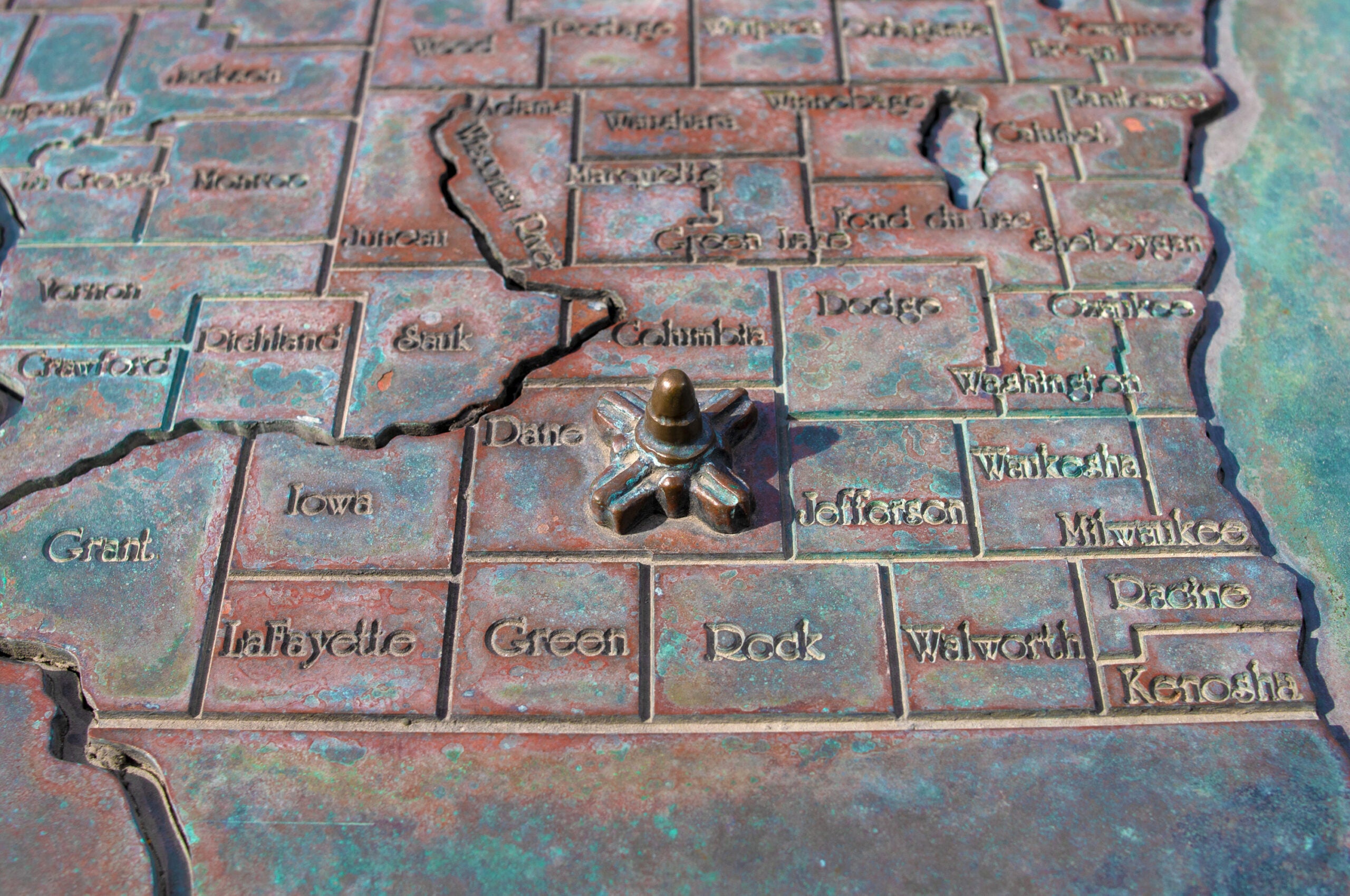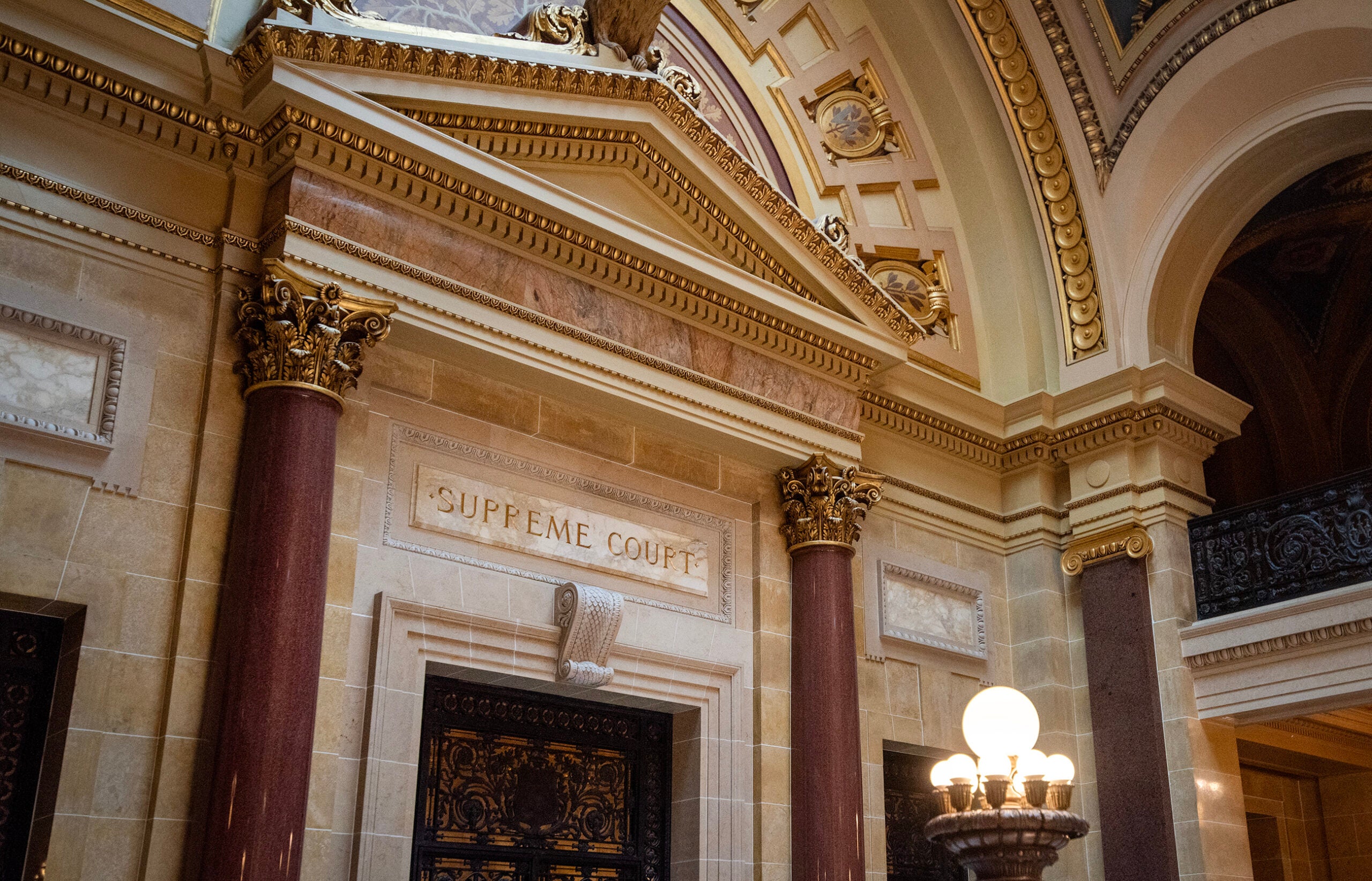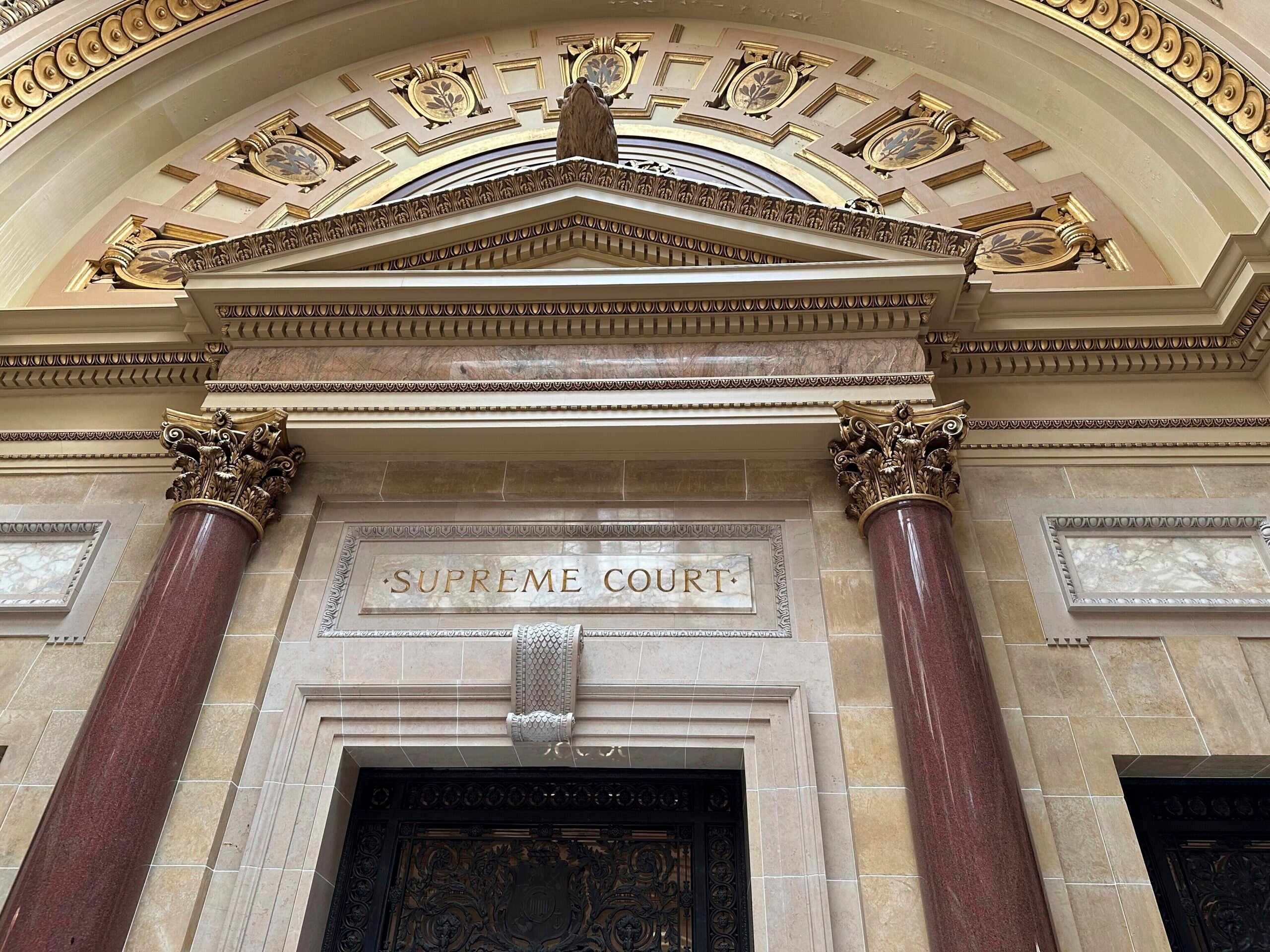Democratic voters in Wisconsin hoping to undo Republican-drawn legislative district maps told the liberal-controlled state Supreme Court on Monday that it should create new maps by March — forcing every lawmaker to stand for election under redrawn lines in 2024.
“The current maps are unsalvageable,” attorneys for the voters argued.
But Republicans who control the Legislature countered that Democrats were exercising “raw political power” and trying to take advantage of the new liberal majority on the court to overturn its 2021 ruling that adopted the current maps.
News with a little more humanity
WPR’s “Wisconsin Today” newsletter keeps you connected to the state you love without feeling overwhelmed. No paywall. No agenda. No corporate filter.
“A change in this Court’s membership cannot justify overturning that precedent,” attorneys for the Legislature wrote in legal filings. Oral arguments are set for Nov. 21.
Democratic Gov. Tony Evers has intervened on the side of voters asking the court to toss out the Republican-drawn maps, widely seen as among the most gerrymandered in the country, and draw new ones ahead of the 2024 election.
Republicans have been in majority control of both the Wisconsin Senate and Assembly since 2011. During that time, they have enacted a wide range of conservative priorities. They have all but eliminated collective bargaining for public workers, and since 2019 they’ve been a block on Evers’ agenda. Republicans are also just two seats short of a supermajority that would allow them to overturn Evers’ vetoes.
New maps favoring Democrats would weaken Republicans’ grip on legislative power, which they have also used in the Senate to fire Evers appointees and to threaten impeachment of Wisconsin Supreme Court Justice Janet Protasiewicz and the state’s elections leader.
Republican Assembly Speaker Robin Vos continues to threaten impeachment of Protasiewicz after she refused to step down from the redistricting case. Impeachment has drawn bipartisan opposition and two former conservative Wisconsin Supreme Court justices, asked by Vos to investigate the possibility, told him it was not warranted. Vos last week suggested he would pursue impeachment if Protasiewicz votes to throw out the Republican maps.
Republicans have argued Protasiewicz has pre-judged the case based on comments she made during the campaign calling the current maps “unfair” and “rigged.”
Those comments “invited” the filing of the current lawsuit, the Legislature argued in its latest filing with the Supreme Court. If Protasiewicz overturns the court’s earlier ruling adopting the Republican-drawn map, that will be evidence of unconstitutional “prejudgment and bias,” the Legislature argued.
Protasiewicz, in her decision not to recuse from the case, said that while stating her opinion about the maps, she never made a promise or pledge about how she would rule on the case.
The redistricting lawsuit, filed the day after Protasiewicz joined the court in August and flipped majority control to 4-3 for liberals, asks that all 132 state lawmakers be up for election next year in newly drawn districts. In Senate districts that are midway through a four-year term in 2024, there would be a special election, with the winners serving two years. The regular four-year cycle would resume again in 2026.
The Legislature argued that the court should give it time to draw new maps and not rush to enact something any sooner than the 2026 election.
Wisconsin’s redistricting case centers on whether the current districts are not contiguous and if they violate the Wisconsin Constitution’s separation of powers doctrine.
The majority of current legislative districts — 54 out of 99 in the Assembly and 21 out of 33 in the Senate — violate the state constitution’s contiguity requirement, attorneys challenging the maps argued Monday.
That makes Wisconsin an outlier nationally, with 46 other states having no noncontiguous districts, and Pennsylvania, Massachusetts and Tennessee having a total of nine noncontiguous districts, attorneys argued.
Wisconsin’s redistricting laws, backed up by state and federal court rulings over the past 50 years, have permitted districts under certain circumstances to be noncontiguous, attorneys for the Legislature argued. Even if the court decided to address the issue, it could only affect alleged areas where districts aren’t contiguous and not upend existing district lines, Republicans argued.
Those seeking new maps contend that the Supreme Court violated the separation of powers doctrine when it adopted the Republican-drawn map that Evers had previously vetoed, “improperly seizing powers for itself the Constitution assigns to other branches.”
The legislative electoral maps drawn by the Republican-controlled Legislature in 2011 cemented the party’s majorities, which now stand at 64-35 in the Assembly and a 22-11 supermajority in the Senate. Republicans adopted maps last year that were similar to the existing ones.
Wisconsin’s Assembly districts rank among the most gerrymandered nationally, with Republicans routinely winning far more seats than would be expected based on their average share of the vote, according to an Associated Press analysis.
© Copyright 2026 by The Associated Press. All rights reserved. This material may not be published, broadcast, rewritten or redistributed.



